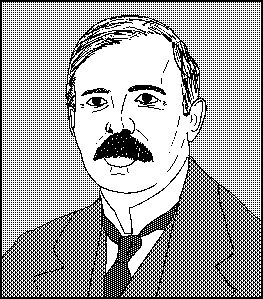 Following Paul Stevenson’s blog yesterday about some of the interesting events at this year’s British Science Festival, I thought I would add some my own favourites. I should say that the whole week, the largest science festival in Europe, held this year in Bradford, has been a resounding success. The events organised by the Physics and Astronomy Section drew in the largest crowds of all (as usual), apart from the big evening lectures in the theatre in town given by the explorer Ranulph Fiennes and Lord Robert Winston.
Following Paul Stevenson’s blog yesterday about some of the interesting events at this year’s British Science Festival, I thought I would add some my own favourites. I should say that the whole week, the largest science festival in Europe, held this year in Bradford, has been a resounding success. The events organised by the Physics and Astronomy Section drew in the largest crowds of all (as usual), apart from the big evening lectures in the theatre in town given by the explorer Ranulph Fiennes and Lord Robert Winston.On Wednesday, we held our section presidential session, entitled Rutherford 100. It was a celebration of the centenary of Ernest’s Rutherford’s famous paper in which he proposed a radically new picture of the atom with its tiny nucleus at the centre – and so was born the field of nuclear physics. There were three speakers in the session: yours truly (as this year’s section president), Professor Mary Fowler, a geophysicist at Royal Holloway and Lord Rutherford’s great granddaughter, and Dr David Jenkins, a nuclear physicist at the University of York.
Between us we covered all aspects of Rutherford’s life, work and legacy. He grew up in New Zealand before travelling to Cambridge to work with JJ Thompson, the discoverer of electrons. However, Rutherford was far more interested in the new subject of radioactivity and was that field that landed him the Nobel Prize, in Chemistry, in 1908. But his name will always be associated with the Geiger-Marsden experiment involving the alpha particles and the gold leaf. That work was actually carried out in 1909, but it would take Rutherford almost two years before he figured out what was happening, namely that the reason one in every 8000 alpha particles bounced back off the gold was because of the concentrated mass and positive charge of each gold atom in the tiny confines of the nucleus. Until then, physicists had followed Thompson’s suggestion that atoms didn’t contain a nucleus but had their mass and charge smeared out throughout their volume.
I pretty much did all this early science stuff before handing over to Mary Fowler to talk about her family history. Dave Jenkins went on to discuss one of the legacies of Rutherford’s work, in nuclear astrophysics.
By a strange coincidence, that same Wednesday evening, BBC2 aired a Horizon that I was presenting – on nuclear power. So it was a real nuclear science sort of day. The specific subject of the Horizon was about the issue of public confidence in nuclear energy in the wake of Fukushima. The filming had taken us to Japan and the site of the nuclear accident as well as the wider devastation caused by the real disaster there, the earthquake and tsunami. We also visited Chernobyl to investigate the long term health issues following that more serious accident 25 years ago.
One of the topics I covered in the Horizon was the possibility of alternative sources of nuclear fuel, namely thorium. This element is safer than uranium because burning it in a reactor does not produce plutonium for use in weapons. It is also cheaper, more efficient and more abundant than uranium. The reason it has never been used is because of the very real link between civil nuclear energy and nuclear weapons.
And as though this were all perfectly planned and orchestrated, in between the Rutherford event ending and my Horizon screening was a talk at the festival given by a physicist from the University of Huddersfield by the name of Robert Cywinski, all about the latest research into thorium reactors! I took Thorium Bob, as he quickly became known around the festival, out to dinner with the rest of the Physics and Astronomy Section committee to the Mumtaz Indian Restaurant in Bradford. Very nice meal too.
Oh and thanks to the Recorder of the section, Dr Kate Lancaster, who was responsible for putting all our events together (on photonics, dark matter, Rutherford and more). Kate, I am proud to say, is also a Surrey Physics graduate. She reminded me last night that I had taught her Fourier series back in the last millennium.
Ho hum, we’re all getting older.
